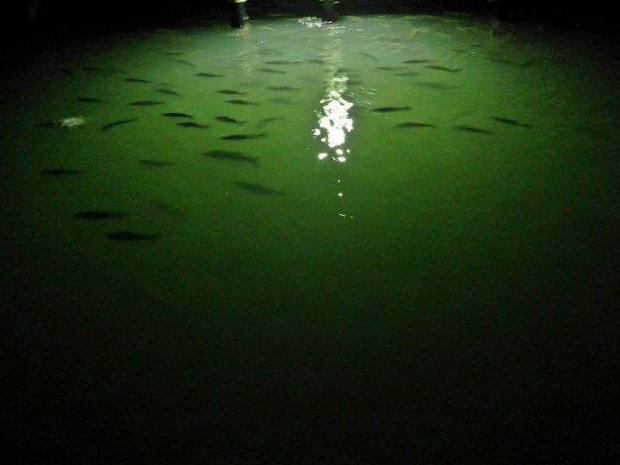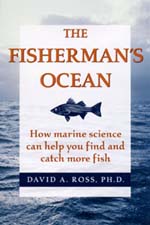The following excerpt is from the book The Fisherman’s Ocean by David A. Ross, Ph.D. Reprinted with permission from Stackpole Books, Mechanicsburg, Pennsylvania.
Color and Night Vision
The question of what color fly to use is a subject of considerable debate and controversy among fishermen. Remember that the color red quickly disappears and becomes gray, and then black, within 10 to 20 feet of the surface or from a fish—yet the color may provide good contrast in low-light conditions and many anglers have success using red lures after dark. Most baitfish have some silver in their body, so your fly probably should, too. White is a good color for flies used in deep water. Dark colors, especially blacks, grays, and purples, generally work well at night, since they produce a better silhouette than brighter flies. In general, the brighter the day, the lighter your fly or lure should be; a dark lure may stand out too much on a very bright day. Yellow often is an effective color to use in turbid water. Many anglers favor using green in their flies and lures, because green will hold its color through most fishable depths.
It’s a good idea to use a larger fly or lure when the water is rough, since rough water reduces visibility. Further, a surface or near-surface fly or lure usually presents good contrast against the ocean’s surface. Many of these lures have darkened undersides to increase their contrast. Most fish and baitfish, however, have a light or silver belly, which reduces their contrast and makes them less visible. For this reason, some lure-makers and fly-tiers prefer to imitate the real thing rather than increase contrast. There probably are advantages to both approaches.
Fluorescent colors, especially chartreuse, are visible for considerable distances under water and are used in many successful lures and flies. The effectiveness of these lures is somewhat surprising because fluorescent colors are not found in nature. These colors are best seen when energized by ultraviolet light. Humans do not see ultraviolet light, but some fish do, which may explain why they see fluorescent colors especially well.
As all anglers know only too well, there are times when no color seems to work. On these days try dark, try light, try something in the middle, or try fishing in another area. Ultraviolet light is more common on cloudy days, so fluorescent colors will be more visible at this time, and flies or lures with fluorescent colors should work better under these conditions. Finally, flies or lures with flashy materials or surfaces may be good attractors, but the flash, or too much of it, could also be threatening to the fish you are trying to attract.
Fishing Tips Concerning Night Vision
The fact that fish lack color vision at night may seem contradictory to your own fishing experiences, during which you found that colored lures were more successful after dark. You were not necessarily mistaken. Although fish may only see black and white at night, contrast is still very important. A good nighttime fly, it stands to reason, should contrast with the night sky. It’s often best to use a dark fly on a dark night, and a light-colored pattern when the moon is bright. The reason is that a dark fly is less transparent and thus creates a better silhouette against a dark sky.
Some colors, especially black and frequently red, work well on dark nights. (Noise-making flies or lures, including ones that push water, are also effective at night.) Contrast is important during the day, too, at which time it might be best to use a light-colored fly, as a dark pattern could produce too much contrast. Furthermore, one way of capitalizing on the fact that some fish can see polarized light is to use flies that reflect light. A reflective fly might work better at night, too—it’s worth a try.
At night, the flash of bright light on the water—fireworks, a passing car, or even lightning—can have an adverse effect on fish, since their eyes are adjusted to night conditions. In fact, a bright light can disorient or panic fish. After a flash of light, fish may have to spend a period of time readjusting to the normal dark conditions, and during this interval their night vision will be reduced and they probably will not feed.
Artificial light left on for extended periods of time, such as a light on a pier, often attracts bait- and game fish—stripers, snook, and tarpon, for example. In this situation, the fish will have adjusted to the continuously shining light. Many fish ambush bait by hiding in the shaded water, whereas their prey is easily detectable when in the lighted area. If a fish is hiding in the shade, it usually will be facing toward the light.
In next Wednesday’s Fish Facts Ross explains more about fish SENSES and how to apply them to improve your fish-catch stats.







